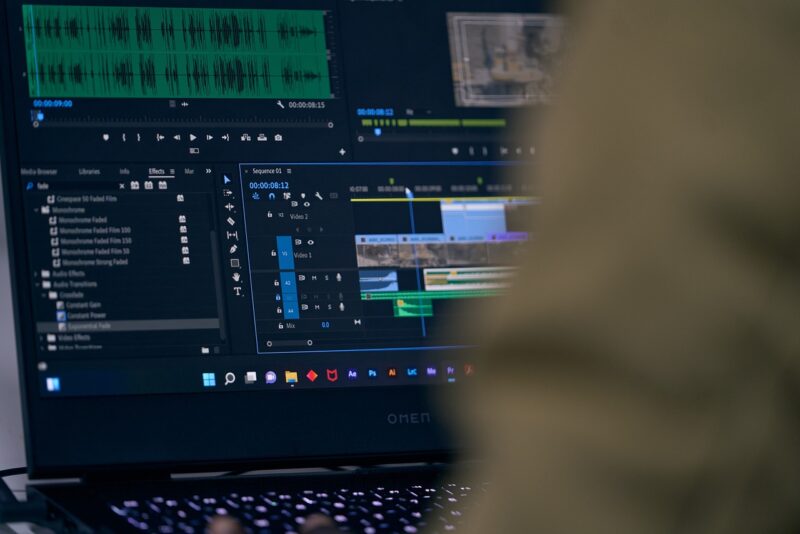What to Consider When Buying a Laptop for Video Editing: Power, Storage, and Display
November 13, 2024

In the world of video editing, having the right equipment can make all the difference in your productivity and the quality of your finished product. Choosing a laptop tailored for video editing is crucial to ensure that the software runs smoothly and that you can handle high-resolution files without a hitch. With many options available, it can be overwhelming to pinpoint the best laptop for your editing needs. In this article, we will break down the essential components to consider when buying a laptop for video editing, focusing on power, storage, and display.
1. Understanding Processing Power
When it comes to video editing, the laptop’s processing power is paramount. Look for laptops equipped with the latest generation multi-core processors.
- CPU Generation: Intel Core i7 or the latest AMD Ryzen processors are typically recommended for video editing. The more cores and threads a CPU has, the better it can handle multitasking and complex rendering tasks. Look for at least a quad-core processor for smooth editing experiences.
- Clock Speed: Higher clock speeds are advantageous for rendering videos and real-time playback. Aim for processors with a boost clock speed of 4.5GHz or higher to ensure quick processing times.
Choosing a powerful CPU allows you to work with high-resolution footage, apply transitions and effects seamlessly, and render your videos faster.
2. The Importance of Graphics Performance
In video editing, graphics processing also plays a significant role, especially when working with effects, transitions, and color grading. Consequently, selecting a laptop with a dedicated GPU is crucial.
- Dedicated vs. Integrated Graphics: A dedicated graphics card (e.g., NVIDIA GeForce GTX or RTX series; AMD Radeon) will significantly improve your editing experience. Integrated graphics may struggle with demanding tasks, making them insufficient for high-resolution editing.
- VRAM: Look for at least 4GB of VRAM if you plan on working with 4K footage or complex visual effects. More VRAM allows smoother rendering and playback with demanding applications like Adobe Premiere Pro or DaVinci Resolve.
Having a robust graphics card will enhance your rendering capabilities and offer a more responsive editing experience.
3. Storage Solutions: SSD vs. HDD
Storage is a critical factor for video editors, especially considering the large file sizes of video projects. It is crucial to choose the right storage type and capacity.
- Solid State Drives (SSD): An SSD is highly recommended as it provides significantly faster read and write speeds compared to traditional Hard Disk Drives (HDD). This speed reduces load times and improves overall workflow efficiency, especially when moving large video files.
- Capacity: Aim for at least 512GB SSD as a baseline for video editing. Additionally, you may consider models with dual storage options, combining SSD for OS and software with an HDD for additional storage space.
- External Storage: To keep your laptop clutter-free and maintain performance, investing in fast external SSDs for archiving footage and completed projects is advantageous. This gives you ample storage without compromising speed capabilities.
Choosing SSD storage enhances responsiveness and workflow, which is crucial during intensive video editing sessions.
4. Display Quality Matters
The display is your primary interface with your editing process; thus, having a good-quality screen is essential.
- Resolution: At a minimum, consider a full HD (1920 x 1080) display, but higher resolutions like 4K (3840 x 2160) are ideal for accurate editing, especially for 4K footage. Higher resolutions provide more detail and space for timelines and previews.
- Color Accuracy: Look for laptops with 100% sRGB color coverage or higher, especially if you plan to use your footage for professional projects. Accurate color representation ensures your work translates correctly across other platforms and devices.
- Screen Size: A larger screen (15 inches or more) can improve your editing experience by offering more workspace. However, ensure that the laptop is still portable if you plan to work on the go.
A quality display allows you to see every detail in your footage, ensuring color accuracy and helping you make critical editing decisions.
5. Battery Life and Portability
While performance is critical, you must also consider battery life and portability.
- Battery Life: Laptops designed for video editing can consume significant power. Aim for a laptop that offers at least 6-8 hours of battery life if you plan to work without being plugged in. This ensures flexibility while editing on the go.
- Weight and Size: If you frequently travel or work remotely, the laptop’s weight and dimensions matter. Look for something that balances performance with portability, ensuring it can easily fit in your backpack without being cumbersome.
Having substantial battery life while ensuring portability allows you to edit videos wherever you go without the constant worry of access to a power outlet.
6. Additional Features to Consider
Other features might not directly influence editing performance but enhance the overall user experience:
- Ports: Ensure your laptop has multiple USB ports (preferably USB-C), HDMI ports for external monitors, and an SD card reader, which simplifies transferring footage.
- Cooling System: Video editing can be demanding and heat-producing, so look for laptops with good cooling systems to prevent overheating during long editing sessions.
- Keyboard Comfort: Given the long hours spent editing, a comfortable keyboard with good travel can enhance your experience. Backlit keyboards can also be helpful for low-light conditions.
Ensuring these additional features are in place can improve your editing experience and overall workflow efficiency.
Conclusion
When purchasing a laptop for video editing, prioritize processing power, dedicated graphics, fast storage, and a quality display to ensure a smooth editing experience. Battery life and portability are also significant, especially for those who work on the move.
Consider your editing needs, budget, and any specific software requirements you may have. By assessing these elements, you can make an informed decision and invest in a laptop that meets your video editing demands effectively.







